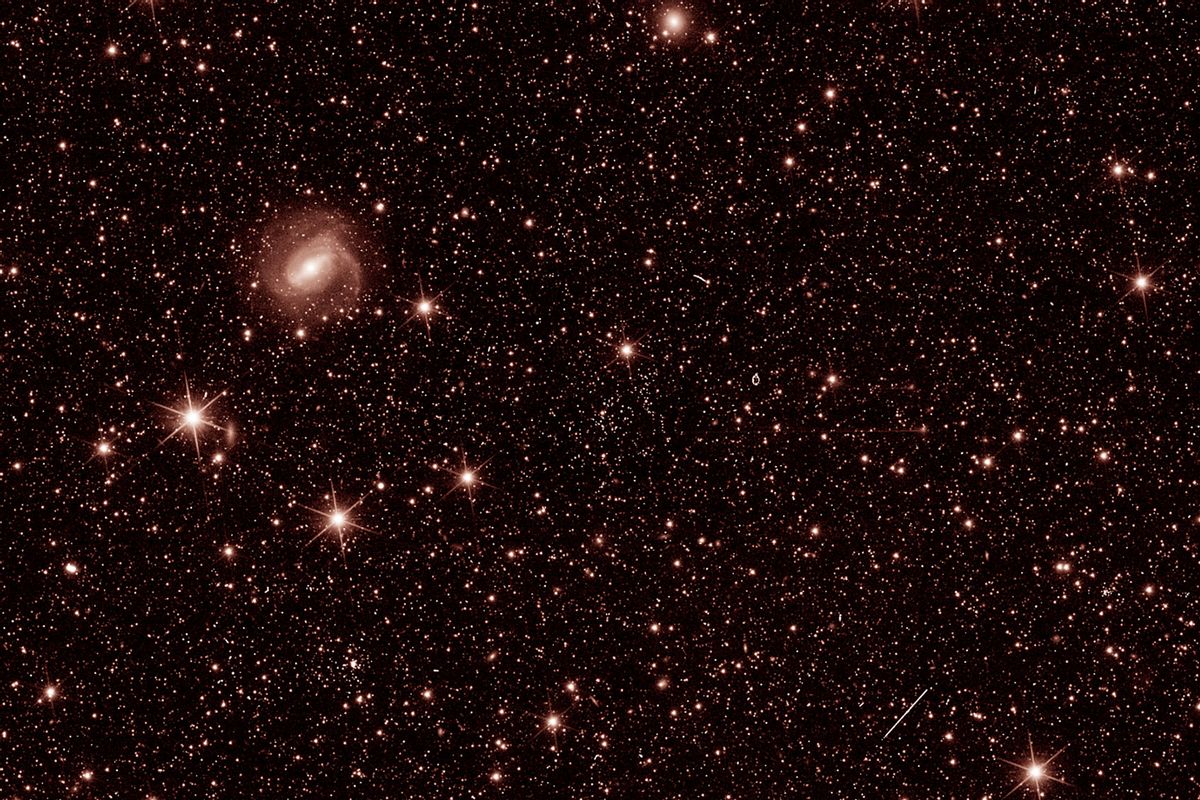Meet Euclid, the powerful space telescope that is helping expose the “dark universe”

The so-called “dark universe,” as its nickname indicates, is that region of the universe which is so distant from Earth that it is extremely difficult to observe. However — thanks to the European Space Agency’s new powerful telescope, Euclid — the dark universe is now a little less dark than it was before. Indeed, thanks to Euclid’s very first test images ever sent back to Earth, humanity can now see the dark universe not as a mysterious void, but as a place brimming with stars and other celestial objects.
The images revealed hundreds and hundreds of glittering stars, cosmic rays and a series of fuzzy blobs that the Euclid’s operators explain are galaxies.
Specifically the images revealed hundreds and hundreds of glittering stars, cosmic rays and a series of fuzzy blobs that the Euclid’s operators explain are galaxies. The European Space Agency (ESA) plans on investigating those galaxies as part of its larger plan to create a detailed map of the universe.
“Ground-based tests do not give you images of galaxies or stellar clusters, but here they all are in this one field,” Reiko Nakajima, an instrument scientist involved in operating Euclid, said in a statement. “It is beautiful to look at, and a joy to do so with the people we’ve worked together with for so long.”
Nor are these the only amazing images produced by Euclid. Another revealed the stars after processing them through something known as a “grism” filter. This filter splits cosmic light into its full spectrum of wavelengths before sending back the data. This information can later be used to determine important scientific details like the distance and chemical compositions of various distant galaxies.
“We’ve seen simulated images, we’ve seen laboratory test images,” William Gillard, an instrument scientist for Euclid’s Near-Infrared Spectrometer and Photometer, said in the same statement. “It’s still hard for me to grasp these images are now the real universe. So detailed, just amazing.”
Want more health and science stories in your inbox? Subscribe to Salon’s weekly newsletter The Vulgar Scientist.
“I have full confidence that the team behind the mission will succeed in using Euclid to reveal so much about the 95% of the universe that we currently know so little about.”
Despite these advances, the Euclid scientists still have their work cut out for them. Among other things, the researchers hope to crack the mysteries behind so-called “dark matter,” the substance or substances that appear to hold the universe together, as well as so-called “dark energy” responsible for the universe’s ongoing expansion. These are ambitious tasks, as 95% of the universe is “dark” precisely because it is so unknown. Yet the Euclid researchers say they are up to that task.
“I have full confidence that the team behind the mission will succeed in using Euclid to reveal so much about the 95% of the universe that we currently know so little about,” ESA director, General Josef Aschbacher, explained in the statement.
“We see just a few galaxies here, produced with minimum system tuning,” Giuseppe Racca, Euclid’s project manager at ESA, also promised in a statement. “The fully calibrated Euclid will ultimately observe billions of galaxies to create the biggest ever 3D map of the sky.”
The Euclid telescope is the ESA’s counterpart to NASA’s James Webb Space Telescope (JWST), which unveiled its first images last year. Those images included distant galaxies and nebulas, as well as later unprecedentedly detailed images of familiar and comparatively closer objects like the planet Jupiter. Astronomers have utilized the JWST images and data to learn about the universe in unprecedented ways — but as one NASA astronomer told Salon last month, there are still objects so far away that JWST struggles to capture their images.
“But the reason these things look like splotches is they are unbelievably far away,” Dr. Michelle Thaller, a NASA astronomer, told Salon at the time. “These are some of the farthest objects we’ve ever seen. By far away in terms of the Webb telescope, we’re talking something on the order of 13 billion years of light travel time. We’re looking at objects where the light that’s coming to us now had to travel through space for such a huge distance that we’re looking at the universe as it was 13 billion years ago. The Big Bang was only about 13.8 billion years ago. So we’re looking back to the very, very early youngest galaxies here.”
Read more
on astronomy

